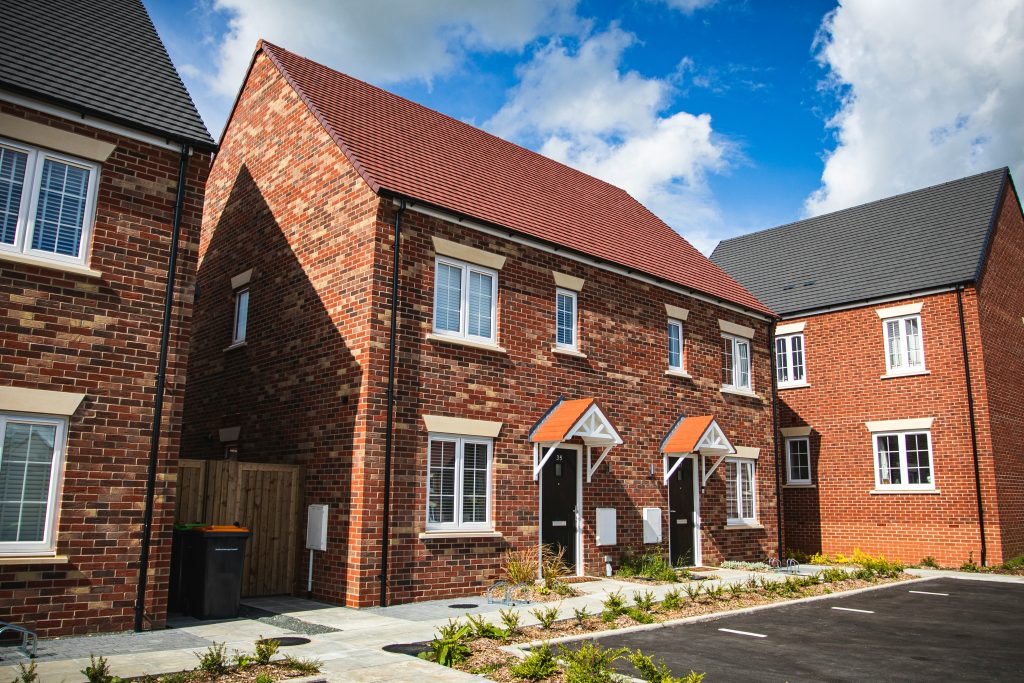
This is a critical issue for many of us both personally and in the business community. Affordable, deliverable and decent housing (including energy efficiency and sustainability) outcomes are all factors which strongly influence quality of life, social mobility, business growth/investment and stable family units. There is also now compelling evidence that better personal health and community well-being can be directly linked to this.
There can be no doubt that this has increasingly become an area of unprecedented market failure and that it will be one of the main battle grounds in the forthcoming General Election campaign.
The latest trends are worth noting. UK house prices rose in May by 0.4%. This reversed the downward trend in April which had fallen by 0.4%. This means that the average house price is now £264,249 rising from £261,962 in April. The main reasons for the increase were wage growth and lower inflation. This increase is despite the current mortgage rate – average for a two- year fixed rate being 5.92% or for a five-year fixed rate of 5.49%. A typical mortgage term is for 25 years but 30 and even 40 year terms are now available. Average wages, excluding bonuses, rose by 6% between January and March 2024. Perhaps more surprisingly household confidence is at a three year high which is good for High Streets and larger asset purchases.
This all sounds rather boring stuff over a morning cuppa but is actually of huge importance to what happens to our local economy. A healthy housing market tends to mean a health economy.
So why do I say that this is an area of unprecedented market failure?
Whilst I do not do politics, the house building industry would say that Michael Gove (he is in charge of Government housing policy) has been the main reason why there is a mismatch between supply and demand resulting in failure to deliver enough new homes to meet market need. This is contributing to a huge shortfall in key worker and local needs housing, unprecedented shortages and sky-high weekly bills for rented accommodation and is condemning the vast majority of first-time buyers to having to wait until their fourties’ in order to get on the housing ladder.
The Labour Party has said very clearly that a doubling of new house building numbers will be a priority along with a radical overhaul of planning regulations. In reaching this conclusion, they may well have dipped back in the UK’s history books and studied how this country recovered from the great depression in the 1930s. One key element of this was to build out of trouble. House building creates almost instant new jobs (1.5 on average for every new house) and injects huge amounts of economic activity into local economies – locally supplied building materials, soft furnishings and accessories etc. During this troubled period Government policy enabled the building of over 400,000 new homes for each of 3 years, the undisputed “ high water-mark for house building”. By 1939 one in every three households lived in a home less than 21 years old. Following the huge double dip recession in 1932, the UK economy recovered over the next three years with annual growth exceeding 4%.
These figures are more than double the current delivery rate which is already well below the minimum required to satisfy demand being 300,000 new homes per year for at least the next 5 years. Many seasoned industry experts believe the Labour Party plan is totally credible.
It is, of course, not as simple as just flicking the “Go” button. Planning failure is as much to do with the mind blowing complexity of new regulations which have to be circumnavigated (such as Biodiversity net gain), an increasing willingness to concede to well organised activist objectors and an unprecedented lack of suitably qualified planning officers.
It is however frustratingly the case that planning does take far too long. For a big site it is currently taking an average of 6.7 years from submitting the planning application to completing the first home plus another 5-10 years to finish off the scheme. This increasingly means that the delivery of new homes is dominated by around 8 majors companies. They are the only ones able to take on the planning battles and then afford to cash-flow schemes, all before securing any profit. Of the 158,190 new homes delivered in 2023, 40% were built by these companies.
There is also a perception that these big companies “land bank” sites. There is no evidence, or indeed logic, to this. With the cost of buying sites, plus the current borrowing rates, plus the time it takes to get a return on capital, this seldom happens. In most cases the reason for a delay in starting building is the completion of the full package of legal documents (frequently more than 12 months) which have to be finalised, even after a resolution for planning has been granted.
It is the case that deliverable consents are standing at a record low. 265,000 homes were granted planning consent in 2023. This is down 19% on 2022. It is way below the required target of 300,000.
The finger of blame always wags when housing is debated. There can be no doubt that many of these problems can be laid at the Government’s door, particularly such as moving the goal post which required Local Authorities to have mandatory housing delivery targets. This was removed to pander to less than 100 anti-development Tory constituencies.
With a pro-development Labour Government promising this bold ambition to double housing delivery numbers, we could be in for a “clash of the titans” with some very angry nimbies. Many have tried over previous years to introduce planning reforms and free-up housing delivery. This time it is a battle which must be won.









